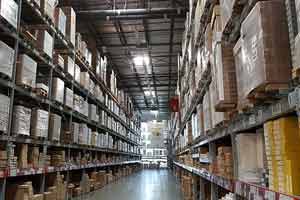
Dangerous goods regulations for warehouses in Barcelona and logistics companies
In the warehouses in Barcelona the preparation in the field of logistics and transport of dangerous goods is total. In this field, essential in different productive sectors of the economy, the regulations must be scrupulously complied with. Especially in relation to dangerous goods.
Dangerous Goods Regulations
Despite their nature, dangerous goods play a very important role in a wide range of economic sectors. There are many companies that have them, so it is necessary to establish a series of regulations that regulate their transport, both nationally and internationally.
In Europe, the Community authorities are responsible for regulating the transport of goods classified as dangerous. They establish a series of rules that are mandatory in each and every one of the movements. The objective pursued with this is none other than to maximize the security of the goods themselves and those in charge of handling them.
Thus, its movement in the interior of Europe is regulated by the directive 2008/68 CE, which refers to the transport of dangerous goods. The legislation was established through an agreement reached by various member countries. And it is updated periodically according to the technical development and the needs that the displacements require in terms of safety.
Types of dangerous goods
Dangerous goods are materials that, if not properly controlled, can pose a risk to human health, infrastructure and transportation. Therefore, in dangerous goods logistics & nbsp; it is important that you know what types you can find.
– Explosive materials and objects , which present a danger of explosion or chemical reaction that gives off energy. For example grenades, fireworks, detonators or ammunition.

– Gases that are transported under pressure so that their volume is not so large. The main risk is that some problem with the containers can cause a leak with serious physical and chemical consequences.
– Flammable liquids and objects containing liquids with low sensitivity, such as turpentine, fuels or varnishes.
– Solid flammable materials , self-reactive and solid desensitized explosives, in addition to materials that may suffer spontaneous inflammation and others that, in contact with water, release combustible gases.
– Oxidizing substances and organic peroxides , which have a lot of oxygen in their composition, in addition to a high reactive component. In the event that they react with flammable elements, they can start to catch on and it will be very difficult to extinguish the fires.
– Toxic and infectious substances such as chemical elements and poisons, in addition to dangerous elements containing pathogens and viruses that can cause diseases and infections such as Ebola or hepatitis.
– Radioactive substances that emit radiation imperceptibly. They can cause alterations and genetic mutations, which causes irreparable damage to living beings.
– Corrosive substances with high acid or alkaline components. These can chemically attack and destroy exposed body tissues.
– Substances that present various hazards even if it is not a risk specified in the previous sections, such as adhesive solutions.
Logistics and transport advice with dangerous goods
It is advisable to follow certain advice regarding the multimodal transport logistics . This task presents a high risk for these goods, so shippers must carefully control all aspects of the process, from packaging to documentation and insurance.
Pack dangerous goods properly
Packaging has a very important function in transport. Therefore you must prepare it so that water, wind and air do not enter, in addition to getting it to arrive in perfect condition at its destination. Keep in mind if there will be changes in temperature and humidity , as well as turbulence and other movements or external agents.
Label dangerous goods
As they can cause damage, it is important that you label them correctly and that the signs are visible both on the outside and inside. Dial what the IMDG code is , the UN number and the sender’s contact phone in case there is an emergency.
Prepare the documentation properly
It is essential that you properly prepare the documentation corresponding to each shipment, but keep in mind that the inspection will be especially rigorous with this type of packages. Any error filling in the documentation may result in the retention of the same at customs.
Secure the load
Transportation insurance is always necessary in these shipments. Look especially at whether it is a national or international . Hire all the coverages you will need.
Once you have clear the type of shipment, the value of the cargo and the destination, you must request it. In addition, before sending them to their destination, it is convenient to photograph the packaged goods in case there is a problem.
In Galyco Logistic Forwarding, where we have warehouses in Barcelona , we put at your disposal all the information you need about the logistics of dangerous goods and any other type. Do not forget!

